Gardenia thunbergia - Tree gardenia - White gardenia do well in containers (2-5 gallon tubs), in pots and, are suitable as well for hedges...
IDENTIFY GARDENIA THUNBERGIA - WHITE GARDENIA
Gardenia thunbergia grows along the eastern coast of South Africa, from the Eastern Cape to the north of KwaZulu-Natal, and in southern Mozambique. It is usually found in evergreen forest and on forest margins but occasionally in woodland and on the veld (dry habitat in southern Africa dominated by grasses and low shrubs).
It is an evergreen shrub or small tree which reaching 2 to 5 m in height, with a smooth, whitish, usually straight main stem, and short, rigid branchlets. The leaves are glossy, light green, hairless, softly to thinly leathery and conspicuously veined.
White gardenia blooms in summer, peaking in late summer with large, creamy white and highly scented flowers which open from elegantly furled creamy-green buds. The flowers do not turn yellow as they age on the bush and are followed by woody, greyish, egg-shaped fruits. These hard fruits are difficult to open, and the seed needs to be extracted by smashing or sawing through the woody shells.
GARDENIA THUNBERGIA - WHITE GARDENIA CARE AND CULTURE
Cultural information should only be used as a guide, and should be to be adapted to suit you. Your physical location; where you grow your plants, how much time you have to devote to their care, and many other factors, will need to be taken into account. Only then can you decide on the cultural methods that best suit you and your plants.
Light:
Gardenia thunbergia need at least four hours of sunlight daily. Without at least this much light, the plant will not bloom. However, in our fairly brutal summer heat, some afternoon shade will protect the foliage from burning. It grow best in full sun in cooler areas for best flower production or in light, filtered shade in hot locations, preferably with minimum competition from tree roots. In heavy shade, the leaves are thin and weak, and flower production is reduced.
Temperature:
White gardenia prefer temperatures close to 16 °C at night and 21-24 °C during the day. It is suitable for USDA zones 10 to 12. They can handle light freezes, but the foliage will get damaged with sustained cold in exposed locations. The extent of cold injury of gardenias is never certain until spring when new shoots and leaves appear.
The night temperature where the plant is grown influences flower production. Night temperature of 15-17 °C results in almost continuous bloom if plants are in healthy condition and growing well. If night temperature is lower than this, growth is reduced and the foliage is likely to become yellow-green.
Humidity:
Ample humidity is also important (60% or more). The humidity around the plants can be increased by placing them on a pebble tray with clean pebbles, stones, or gravel partially filled with water. Set the pot on top of the pebbles, but do not let it sit in water (caution: this can create a mosquito breeding hazard if not properly managed). Running a room humidifier is an alternative.
Substrate and growing media:
Gardenia thunbergia do well in containers (2-5 gallon tubs), in pots and, depending on the cultivar, are suitable as well for hedges, low screens, mass plantings, and groundcovers with a rich, moist, acidic (pH 5.0–5.5), and well drained soil high in organic matter and free of nematodes. Organic matter levels can be increased with soil amendments such as peat moss, ground bark, and compost. Proper soil pH is essential because it affects the availability of mineral elements. A soil pH above 6.0 increases the possibility of micronutrient deficiencies, particularly iron.
Repotting is needed when roots start to grow out from the bottom of the pot. It is difficult to transplant and does not tolerate root disturbance well. Mechanical injury to roots often occurs during transplanting, so care must be taken. Transplants should be planted higher than is normally done, so that the root ball is an inch or so above the soil level and not entirely covered with soil. Avoid crowding plants to prevent competition from other roots. Because the roots are sensitive to disturbance, do not cultivate around them; suppress weeds by mulching around the plants, and hand-pull weeds when the soil is moist.
Watering:
Watering during dry periods is necessary for healthy plants. The soil should be kept moist at all times with regular watering, but it should not be soggy. Poorly drained, wet soils or excessive watering excludes oxygen, thereby causing root injury. If the soil is allowed to dry, shrinking and cracking also will injure roots. Irrigating with drip systems keeps water off the foliage and flowers, which helps prevent leaf spots. To help maintain adequate soil moisture, use mulch and avoid cultivation around the base of the plant.
Watering is important because it affects the number of flower buds that remain to maturity on a plant. If water stress occurs in a heavily budded plant, some buds will fall before opening. Therefore, large variations in soil moisture should be avoided. Regular watering is necessary after blooming to keep plants in good condition.
During the winter, the plant may need less water due to decreased evaporation from heat and sunlight, so you can cut back some on watering, letting the top half inch of soil dry out before water the plant.
Fertilizer:
Fertilize with an acidifying fertilizer to keep the soil slightly acid, following the product label. Because the plant is susceptible to salt burn, too much fertilizer can lead to damaging salt accumulation. To avoid this, and especially where plants are not watered regularly, occasional leaching can help remove salts from the pot.
A plant purchased from a garden shop usually has been grown in a nursery and given fertilizer to maximize its growth under the nursery climate and irrigation practice (generally, frequent). When you take it home, its growing conditions change; for example, watering may be less frequent, causing salt accumulation from fertilizers in the medium, which harms the roots. Providers of indoor plant services often routinely subject any plant they purchase to thorough leaching over a week or so to remove most fertilizer from the medium. Then, they switch the plant to the fertilizer type and schedule preferred for the conditions in which the plant will be placed.
Pruning:
Prune to keep plants compact, in proper shape, and in scale with the landscape. To maintain plants at their optimum, prune out dead wood, straggling branches, and faded flowers. Young plants growing vigorously during their first year may be pinched back at the growing points to encourage heavy branching; this prevents scraggly growth and promotes a more compact plant. The best time to prune is after flowering, because pruning earlier removes flower buds. Follow pruning with an application of fertilizer
© tanetahi
Pests and diseases:
The most common pests for the plants are:
- Spider mites: Put a piece of white paper under several leaves and shake the leaves gently. Fold the piece of paper in half and make sure you firmly flatten the crease. Open the paper up; if you see small red smudges, you have mites. Treat your plant with Neem.
- Aphids: Spray the plant with a soap spray.
- Scale: The small, black-headed females do not have wings; the males have wings. Treated the plant with horticultural oil.
- Root nematodes: Above ground, the plant will have wilted and yellowing leaves, despite receiving the correct moisture and watering. There are no pesticides for nematodes. Carefully select young plants and only purchase the most healthy looking plants and varieties.
- Mealy bugs: These are tiny, wingless, grayish-colored insects. Look for white, cottony masses on your plant. Mealy bugs can be treated with a soap spray, horticultural oil, or by using a steady stream of water to remove the masses.
- Whiteflies: Look for small white bugs grouped on the underside of the leaves. They will cause the leaves to turn yellow. Neem will help reduce the population, but it will not completely eliminate the whiteflies. The best way to manage white flies is to remove the infected leaves and remove host plants that attract these pests in your home or garden.
- Leaf spot: Fungi trigger the occurrence of spots of different sizes. They may be small or big, dark-brown necrotic areas that are usually surrounded by yellow halos. In most severe conditions there occur premature leaf drops. To control the condition you can spray them with a folia fungicide.
- Canker: This is another common issue that is mainly identified by a main stem swollen below/near the soil line. The bark soon becomes corky and has many cracks. The stem part that is above the canker is yellow. In case the level of humidity is too high, there may be a yellowish substance seen on the surface. Usually, if the plant is affected, it dies very slowly. To prevent spreading of the disease, it’s better to place other bushes in different locations.
- Sooty mold: It leads to appearance of thin black layers of the fungus over the upper surface of the leaves. Leaves curling also accompanies the condition.
- Bacterial leaf spot: is accompanied by round spots on young leaves; soon they become yellow and reddish-brown, surrounded by a yellow halo. When the infection is severe it leads to defoliation. It is important to avoid overhead watering. To prevent further spreading, make sure you use sterilized pots and soil.
- Bud drop: This is an abnormal dropping of buds that takes place during periods of low light intensity or high night temperatures. Of course, in some cases bud drop is a quite normal condition. To avoid the condition, keep the soil moist during flowering, but not wet.
Propagation:
Gardenia thunbergia will take 2-3 years to flower when grown from seed, but less than a year when grown from cuttings or air-layers. Cuttings can be rooted at most times of the year. Terminal leafy cuttings or midsection cuttings with wood 6-8 weeks old should be cut 4-6 inches long. Remove leaves from the lower half of the cutting, keeping two or three sets of leaves on the cutting. Dip the base of stem in a rooting hormone, following the directions for the hormone. Stick the base of the cutting about 1-2 inches deep into a moist rooting medium and firm the medium around the base. A good rooting medium is a 1:1 mixture of peat moss and perlite or a 1:1 mixture of vermiculite and perlite. A 1:1 mixture of sand or fine cinder with peat moss can also be used. Do not use soil as a rooting medium. It limits drainage and aeration under wet conditions and can contain disease pathogens, such as root rot organisms, and nematodes.
Because cuttings have no root systems, high humidity must be maintained around them using misting or a closed-case propagating device. Do not let the propagation medium dry out. Clear plastic can be used for covering the cuttings (for example, with a plastic bag slipped over a pot), but keep this set-up out of direct sunlight. To keep the plastic from resting on the leaves, support it with wire loops or stakes. Check the cuttings occasionally by carefully removing a few from the media. When a cutting has roots at least an inch long (3-6 weeks), transplant it into a separate container or pot.
It is also propagated from seed or truncheon cuttings. Seed can be sown in spring to early summer, even in late summer if your winters are mild. Germination should take 4-6 weeks.
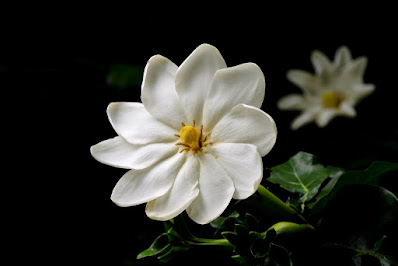
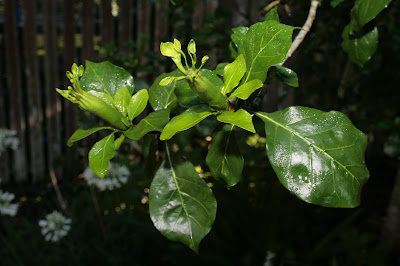
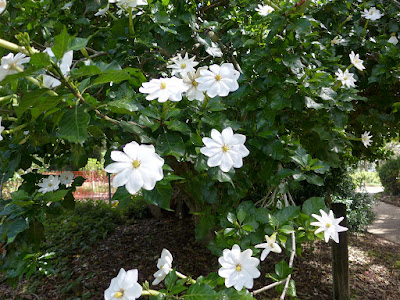
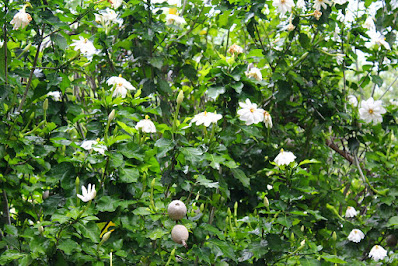
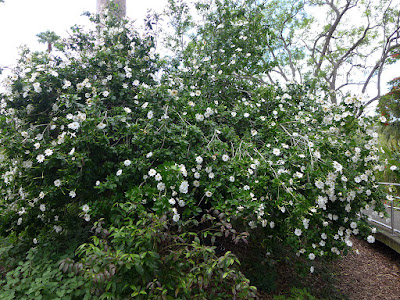












Very lovely job.
ReplyDeletethis was useful. Will be planting it tomorrow if I can figure out where it will fit.
ReplyDelete